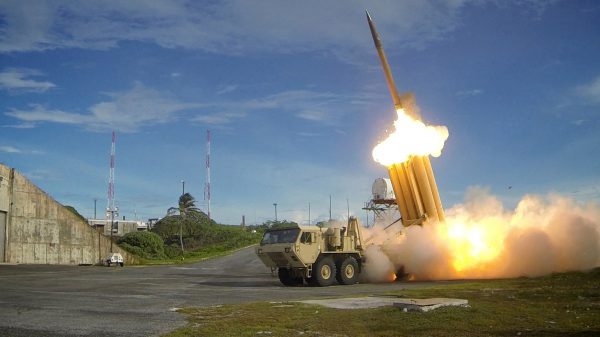Initially, China voiced its opposition to the THAAD deployment and requested that South Korea withdraw the system, but was refused. Over 16 months of recriminations and discord followed.
Bilateral relations suffered from the dispute, resulting in an estimated revenue loss of US$15.6 billion and a deterioration of South Korean views of China. Surveys show that positive public opinion of China fell from 24.1 per cent to 15 per cent in 2018. Over 58 per cent of people reported a negative view of China in 2018, up from 33.5 per cent two years prior.
Eventually South Korean President Moon Jae-in’s visit to Beijing in December 2017 helped to smooth things over. On the surface, South Korea–China relations seem to be on the mend.
The two countries celebrated the 10th anniversary of the South Korea–China Strategic Partnership in 2018. They sought to create an opportunity to discuss future-oriented development of bilateral relations, emphasising building trust in politics, expanding practical cooperation and strengthening strategic communication on Korean Peninsula issues. Chinese tourism to South Korea is gradually picking up and service exports of cultural content from South Korea to China have rebounded. Lotte Mart, a South Korean supermarket chain that suffered difficulties in China due to the THAAD dispute, has completed the process of selling most of its stores.
But the conflict has only been postponed, not resolved. Both sides are delaying the matter, preferring to solve it at some point in the future. The issue could emerge at any time as a hot potato between Seoul and Beijing, particularly as denuclearisation negotiations proceed.
China is adamant that the THAAD deployment is against its strategic and security interests, and says it expects to deal with the issue properly at some point. This could be interpreted as a request to withdraw the THAAD system if the situation changes. After a series of inter-Korean summits and a historic June meeting between US President Donald Trump and North Korean Chairman Kim Jong-un in 2018, the second Trump–Kim summit could be seen as a moment to herald such a change. Some may argue that the time for the proper handling of the THAAD system may be approaching.
But there is no mutual understanding of what circumstances will allow South Korea to withdraw the THAAD system. Finding a fundamental solution to the issue will not be easy.
For South Korea, the intercepting capability of the Korean Air and Missile Defense (KAMD) system has limitations in defending against various North Korean ballistic missiles. The THAAD system provides the upper tier of a multi-layered defensive shield that the South Korean military is trying to build. Currently, South Korea’s L-SAM (long-range surface-to-air missiles), one of the three layers of KAMD in addition to the lower altitude M-SAM and Patriot interceptors, awaits further work after technical problems were discovered at a recent flight-test.
For the United States, the THAAD system is deployed to protect US soldiers and their families on the Korean Peninsula. At a US Senate confirmation hearing in June 2018, the US Ambassador to South Korea Harry B Harris Jr said, ‘If North Korea’s ballistic missile threat disappears, there is no need to deploy THAAD in South Korea’. In other words, the situation will remain the same until the North’s missile threat is completely eliminated.
So it is likely that support for the THAAD deployment will remain unchanged, unless denuclearisation negotiations cover scrapping not only North Korea’s intercontinental ballistic missiles but also its intermediate and medium-range variants.
For the time being, it seems that the contention over the THAAD deployment will not go away. Besides, South Korea will be under pressure to strengthen its military cooperation with the United States to counter China’s rise in the region, at a time when Seoul may be considering integrating the alliance with the broader US strategy in Northeast Asia beyond deterring North Korea.
Jina Kim is Research Fellow at the Korea Institute for Defense Analyses and Visiting Professor at Yonsei Graduate School of International Studies.


The author misses several important points, the most crucial being that THAAD deployment was forced upon the Republic of Korea (there is no country named “South Korea”) by the US. A friend on Facebook, Charles Park, commented as well, “Korea may have no say in what the US military transits through Korea. The analyst may also not know that the bilateral agreements place limits on RoK weapons development. Further, she has no opinion on the formation of a new Pan Pacific Alliance against China and the ROK incorporation into it, specifically how it would impact ROK security.”
Granted, China boycotted RoK as a result of THAAD deployment, even boycotting the company who originally owned the land where the missiles were installed (making a mess of a perfectly good golf course), but that move misses the target, namely the US.